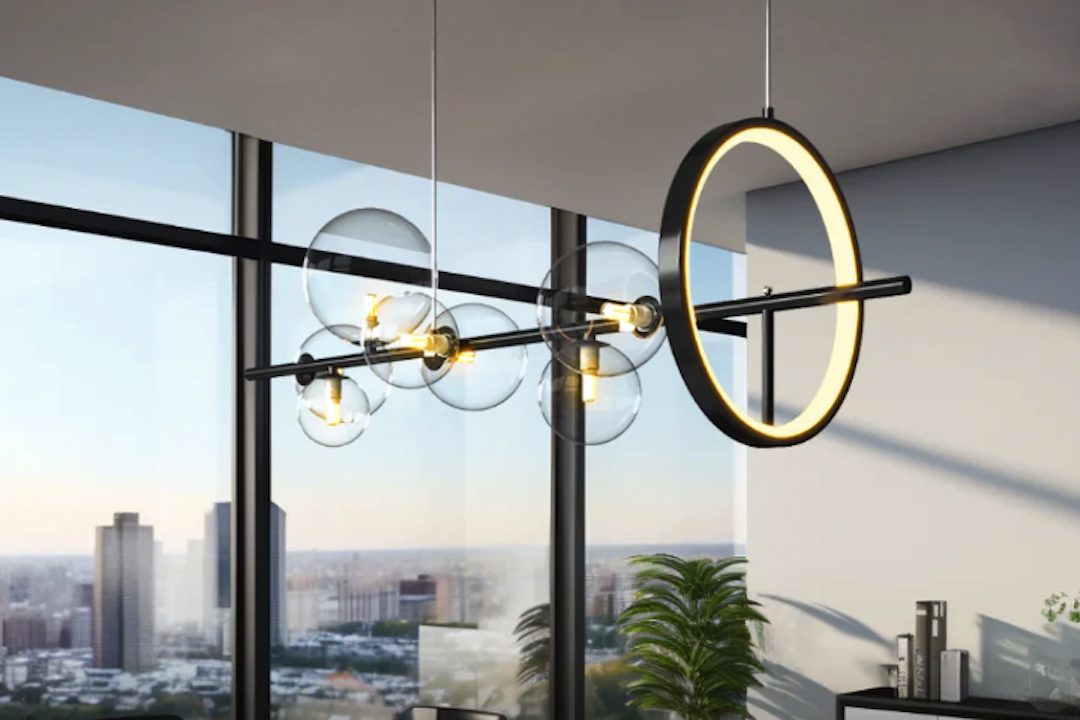Transparent glass chandeliers have emerged as a quintessential element in modern interior design, seamlessly blending elegance with contemporary aesthetics. These fixtures, often characterized by their ethereal quality, allow light to dance through their crystalline forms, creating a captivating ambiance in any space. The allure of transparent glass lies not only in its visual appeal but also in its versatility; it can complement a myriad of design styles, from minimalist to opulent.
As homeowners and designers alike seek to create spaces that are both functional and beautiful, transparent glass chandeliers have become a favored choice for illuminating living rooms, dining areas, and entryways. The history of chandeliers dates back to the medieval period when they were primarily used in churches and grand halls. However, the evolution of materials and design has transformed the chandelier from a mere source of light into a statement piece that reflects personal style and taste.
Transparent glass chandeliers, in particular, have gained popularity due to their ability to enhance the aesthetic of a room without overwhelming it. Their delicate nature allows them to blend into various color palettes and design themes, making them an ideal choice for those looking to elevate their interiors while maintaining a sense of openness and lightness.
Choosing the Right Size and Style
Introduction to Transparent Glass Chandeliers
Selecting the appropriate size and style of a transparent glass chandelier is crucial for achieving a harmonious balance within a room. The dimensions of the chandelier should be proportionate to the space it occupies; a large chandelier can serve as a stunning focal point in a grand foyer, while a smaller piece may be more suitable for intimate dining areas or cozy nooks. A common guideline is to add the room’s dimensions (in feet) together and convert that sum into inches to determine the ideal diameter of the chandelier.
Determining the Ideal Chandelier Size
For instance, a room measuring 12 feet by 15 feet would suggest a chandelier with a diameter of approximately 27 inches. This calculation provides a starting point for finding the perfect chandelier Dalsahome size that complements the room’s dimensions. By considering the room’s proportions, individuals can narrow down their options and find a chandelier that enhances the space without overwhelming it.
Choosing a Style to Match Your Decor
In terms of style, transparent glass chandeliers come in various designs that cater to different tastes. From sleek, modern silhouettes with clean lines to more ornate, vintage-inspired pieces adorned with intricate details, the options are vast. When choosing a style, consider the existing decor and architectural elements of the space. A contemporary glass chandelier with geometric shapes may enhance a modern kitchen, while an elegant, cascading design could elevate the sophistication of a traditional dining room.
Customizing Your Chandelier
Additionally, the finish of the metal components—such as chrome, brass, or matte black—can further influence the overall aesthetic, allowing for customization that aligns with personal preferences. By considering these factors, individuals can find a transparent glass chandelier that not only complements their space but also reflects their unique style and taste.
Placement and Installation Tips
The placement of a transparent glass chandelier is pivotal in maximizing its impact within a room. Ideally, it should be hung at a height that allows for unobstructed views while providing adequate illumination. In dining areas, for example, the bottom of the chandelier should typically be positioned 30 to 36 inches above the table surface to ensure that it provides sufficient light without obstructing conversation.
In living rooms or entryways, consider hanging the chandelier at least 7 feet above the floor to maintain an open feel and prevent any accidental bumps. Installation requires careful consideration of both electrical and structural elements. It is essential to ensure that the ceiling can support the weight of the chandelier, especially if it features multiple glass components that can add significant heft.
If unsure about the installation process or electrical connections, consulting with a professional electrician is advisable. Additionally, using adjustable mounting hardware can provide flexibility in height adjustments during installation, allowing for fine-tuning after the chandelier is hung.
Enhancing Natural Light with a Transparent Glass Chandelier
One of the most remarkable features of transparent glass chandeliers is their ability to enhance natural light within a space. The transparency of the glass allows sunlight to filter through, creating an interplay of light and shadow that can transform an ordinary room into an inviting sanctuary. When strategically placed near windows or in areas where natural light is abundant, these chandeliers can amplify brightness during daylight hours, making spaces feel more open and airy.
To maximize this effect, consider pairing transparent glass chandeliers with other reflective surfaces such as mirrors or glossy finishes. Mirrors can bounce light around the room, further enhancing the luminous quality of the chandelier. Additionally, choosing light-colored walls and furnishings can create a cohesive look that emphasizes brightness and openness.
The result is an environment that feels both spacious and welcoming, perfect for entertaining guests or enjoying quiet moments at home.
Cleaning and Maintenance
Maintaining the pristine appearance of a transparent glass chandelier requires regular cleaning and care. Dust and grime can accumulate on glass surfaces over time, dulling their shine and diminishing their visual impact. To keep your chandelier looking its best, it is advisable to dust it regularly using a soft microfiber cloth or feather duster.
For more thorough cleaning, especially if there are hard-to-reach areas or intricate designs, consider using a gentle glass cleaner and a soft cloth to avoid scratching the surface. When cleaning, always ensure that the chandelier is turned off and cool to the touch. If possible, remove individual glass components for easier access and cleaning.
For chandeliers with multiple bulbs or complex designs, it may be beneficial to consult the manufacturer’s guidelines for specific cleaning instructions. Regular maintenance not only preserves the beauty of the chandelier but also ensures optimal performance by preventing dust buildup on light bulbs that can affect brightness.
Incorporating Color and Design Elements
Adding Color and Depth
Many modern designs feature colored glass accents or intricate patterns that add depth and character without overwhelming the overall aesthetic. For instance, a chandelier with subtle hues of blue or amber can introduce warmth and personality to a space while still maintaining its transparent quality.
Complementing Design Elements
In addition to color, consider how other design elements can complement your chandelier. Textiles such as curtains or upholstery in coordinating colors can create a cohesive look throughout the room. Artwork or decorative accessories that echo the shapes or colors found in the chandelier can further enhance its presence as part of a larger design narrative.
Creating a Curated Environment
By thoughtfully integrating these elements, you can create an environment that feels curated and intentional.
Energy-Efficient Lighting Options
As sustainability becomes increasingly important in home design, energy-efficient lighting options have gained prominence in chandelier selection. Many transparent glass chandeliers now accommodate LED bulbs, which offer significant advantages over traditional incandescent bulbs. LED lights consume less energy while providing comparable brightness levels, making them an eco-friendly choice that can reduce electricity bills over time.
When selecting LED bulbs for your chandelier, consider options that mimic the warm glow of incandescent lighting to maintain a cozy atmosphere. Additionally, dimmable LED bulbs can provide versatility in lighting levels, allowing you to adjust brightness according to different occasions—whether hosting a dinner party or enjoying a quiet evening at home. By opting for energy-efficient lighting solutions, you not only contribute to environmental sustainability but also enhance the functionality of your transparent glass chandelier.
Creating a Statement Piece with a Transparent Glass Chandelier
A transparent glass chandelier has the potential to become a stunning statement piece within any room when chosen thoughtfully and placed strategically. To achieve this effect, consider selecting a chandelier with unique design features—such as oversized dimensions or artistic shapes—that draw attention and spark conversation. A bold design can serve as an anchor for your decor, influencing color schemes and furniture choices throughout the space.
In addition to size and shape, consider how lighting effects can enhance the chandelier’s presence. Using dimmers allows you to create different moods throughout the day; bright lighting can highlight intricate details during gatherings while softer settings can create an intimate atmosphere for quieter moments. Furthermore, layering additional light sources—such as wall sconces or table lamps—can complement the chandelier’s glow while adding depth to your overall lighting scheme.
By thoughtfully curating these elements, you can transform your transparent glass chandelier into an unforgettable focal point that elevates your interior design narrative.

